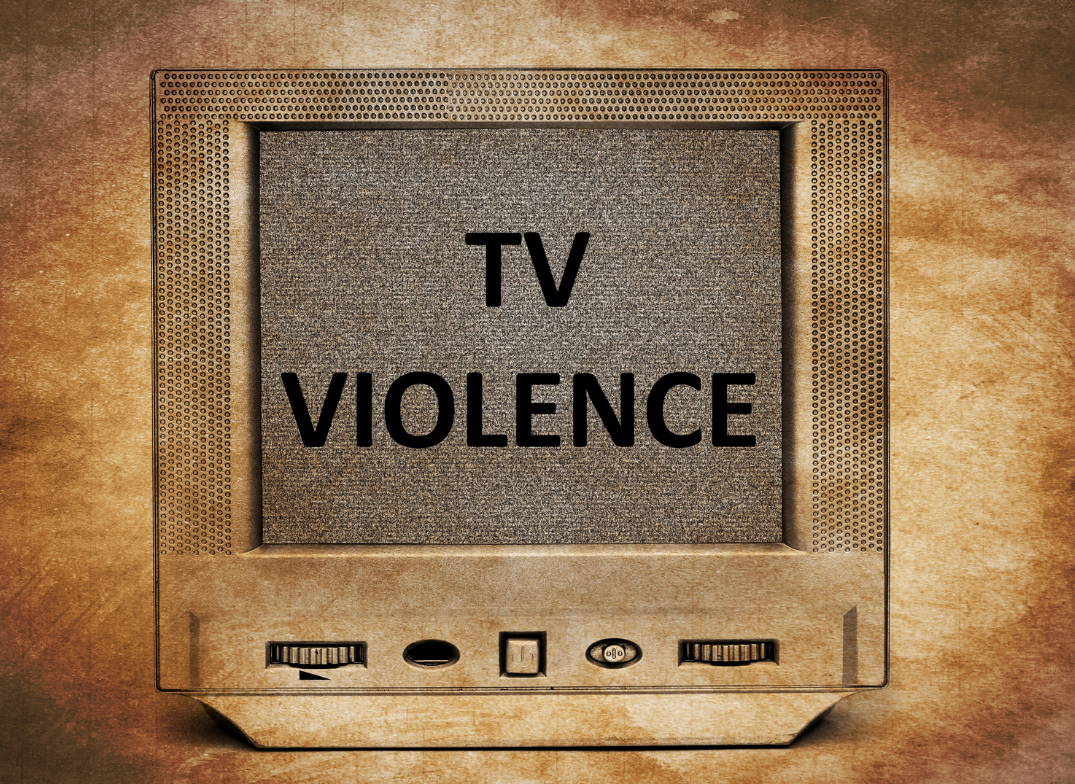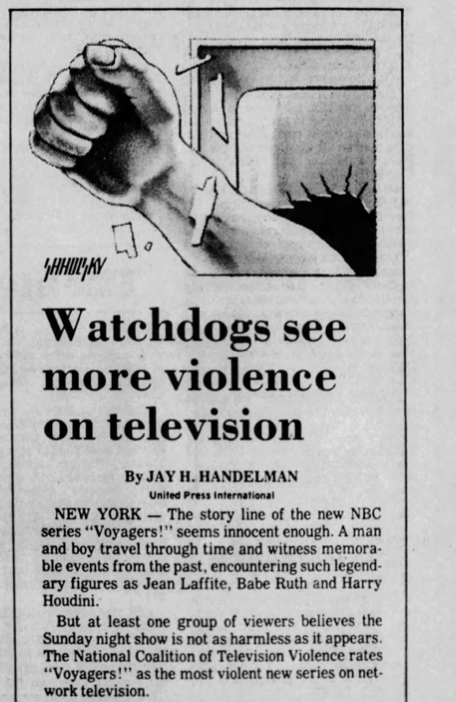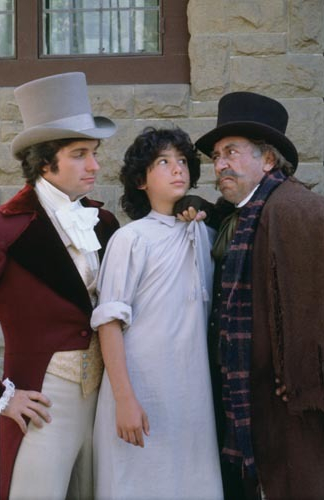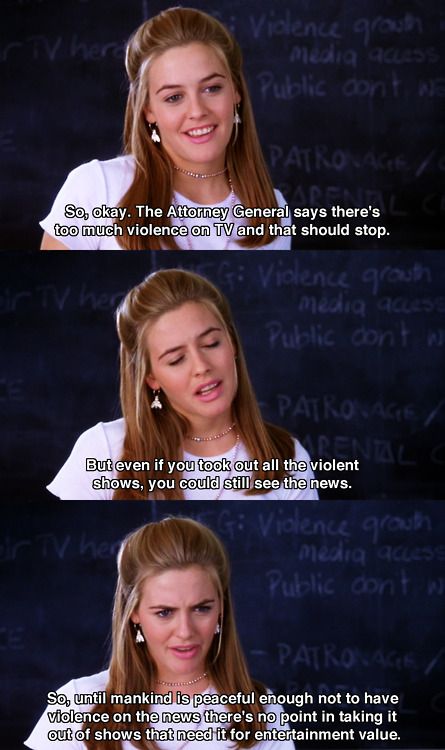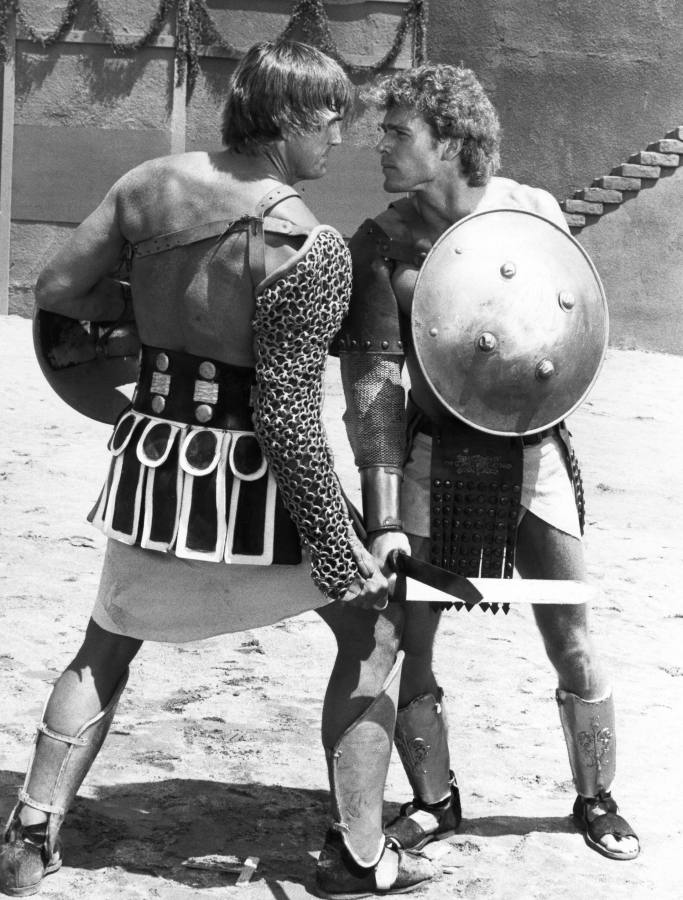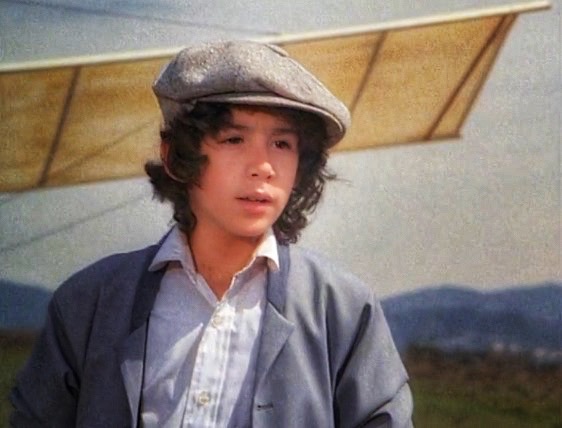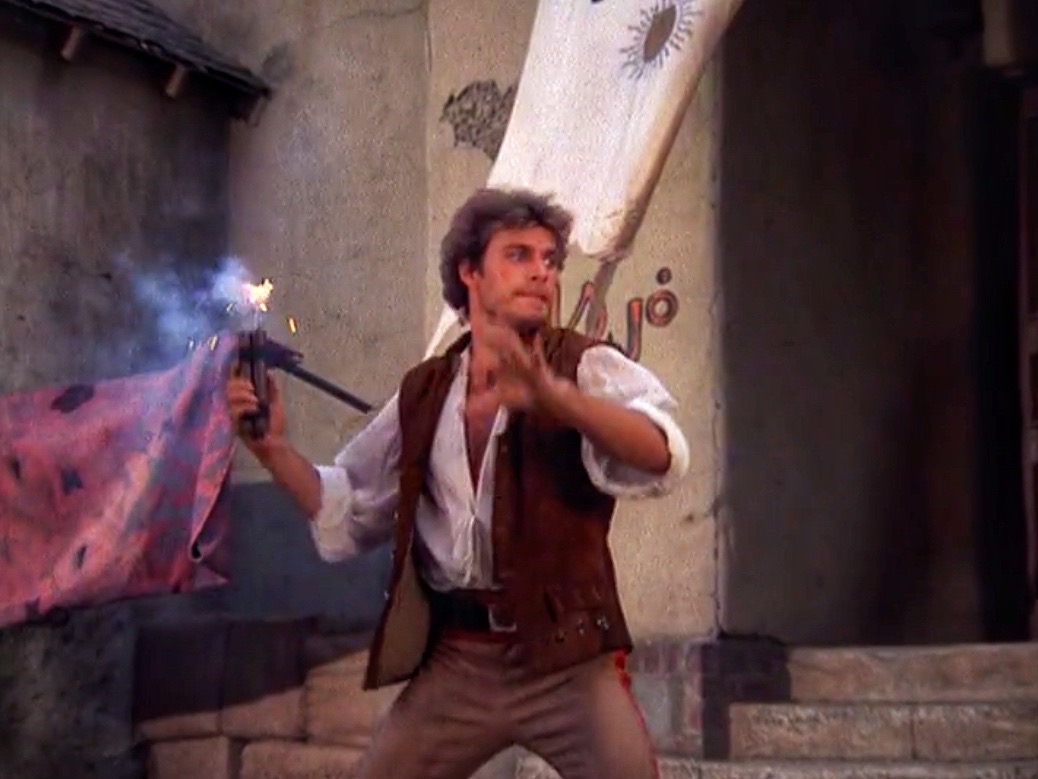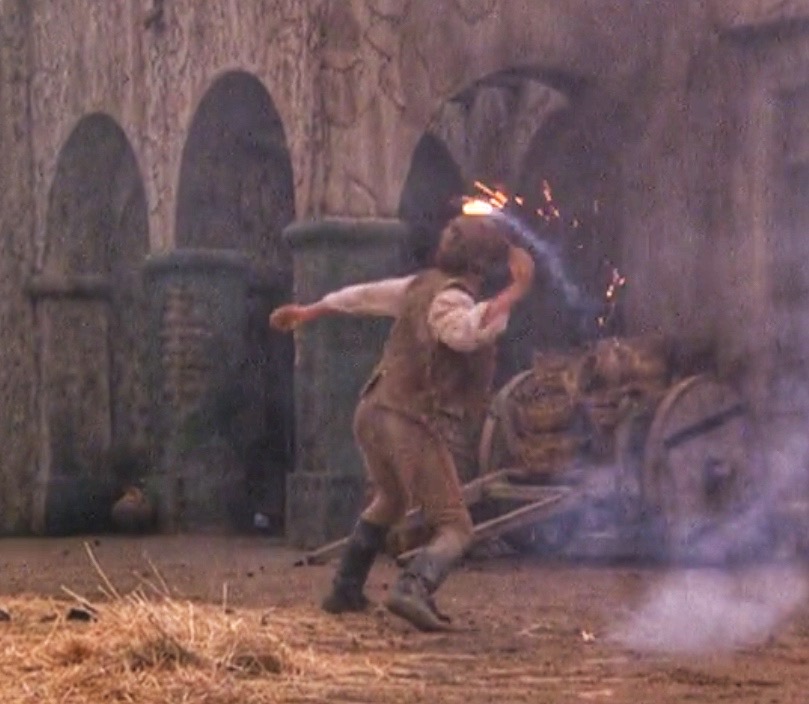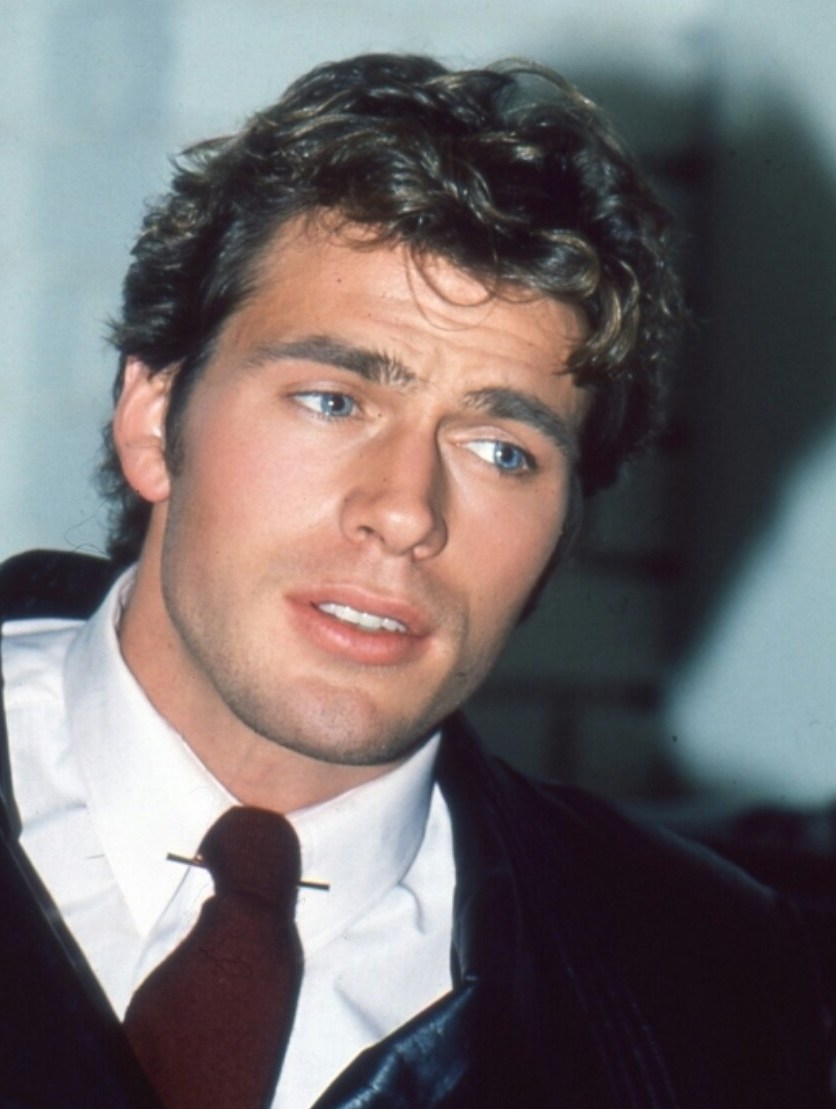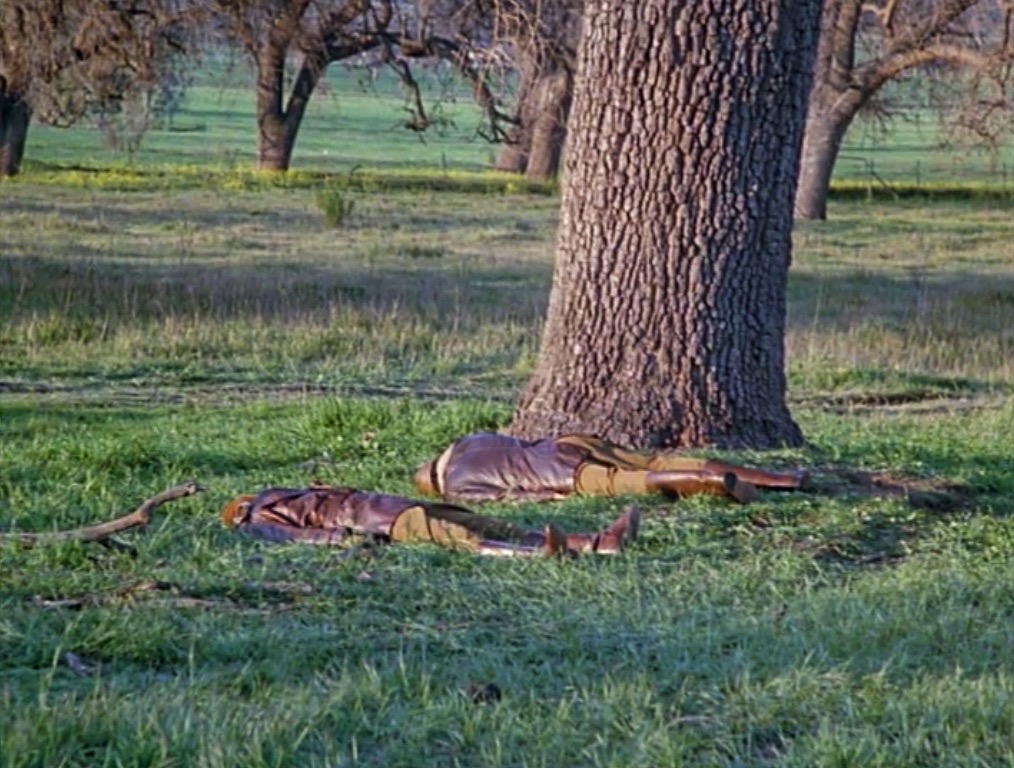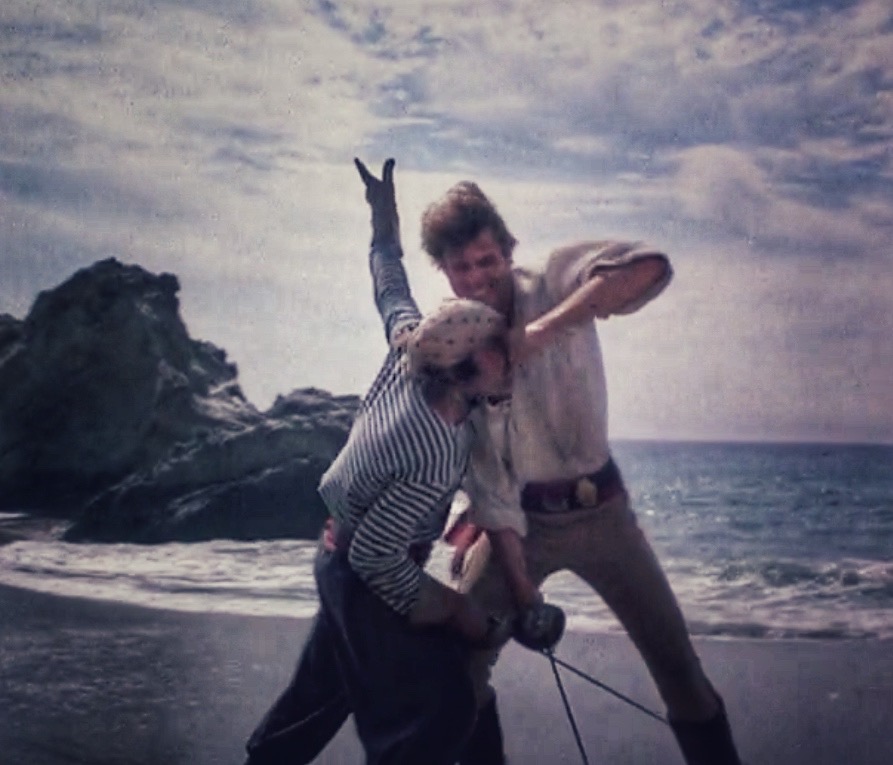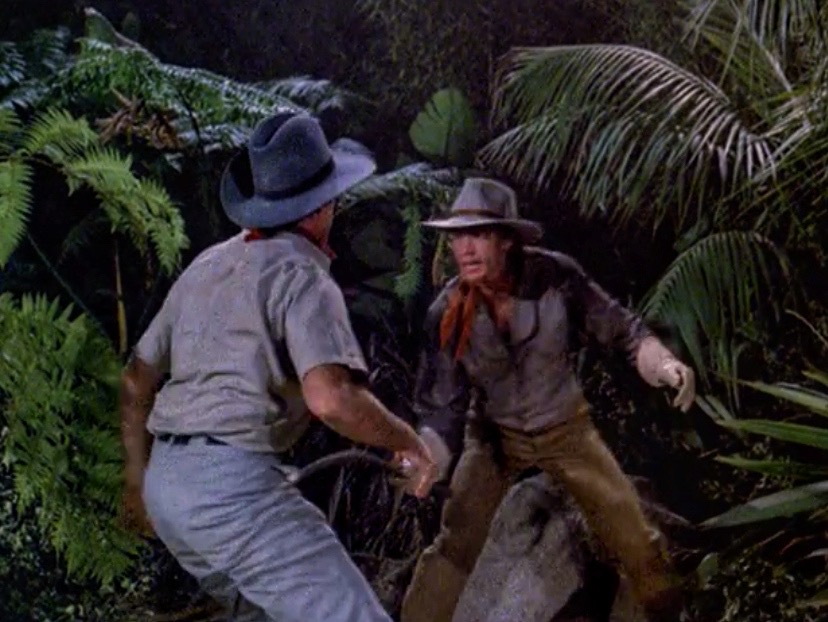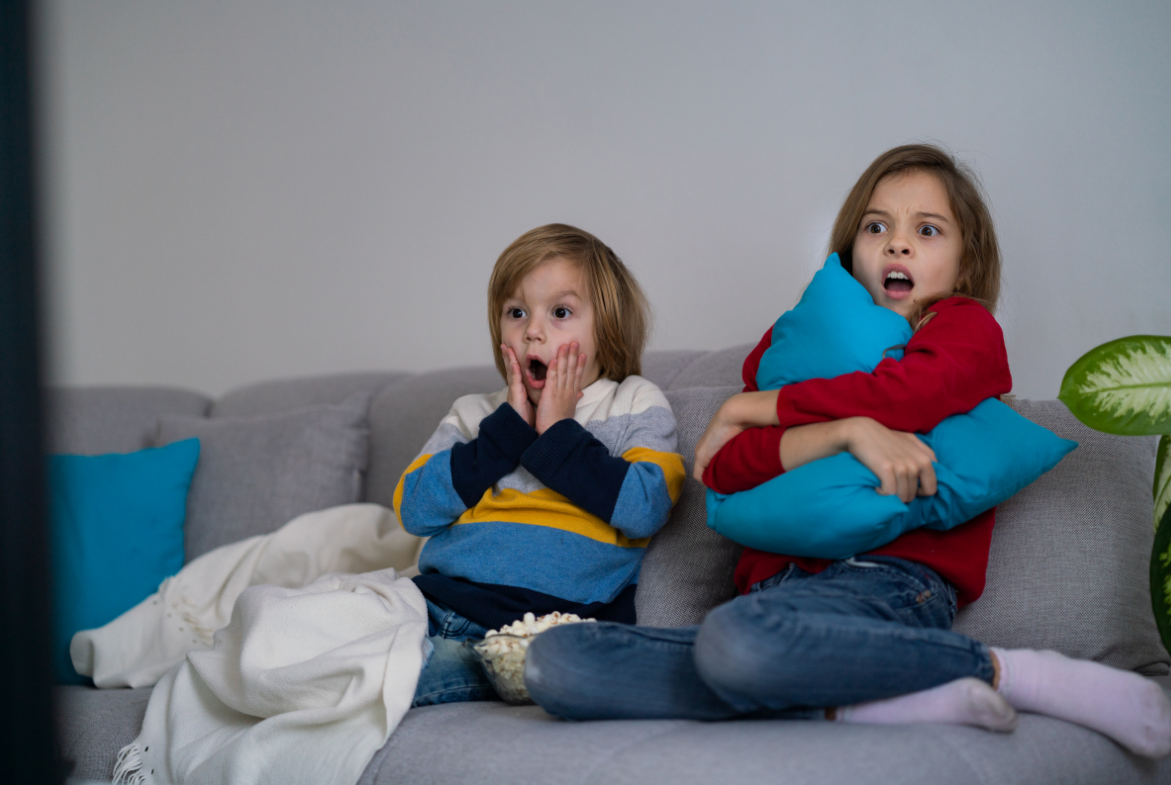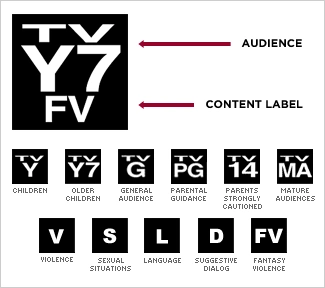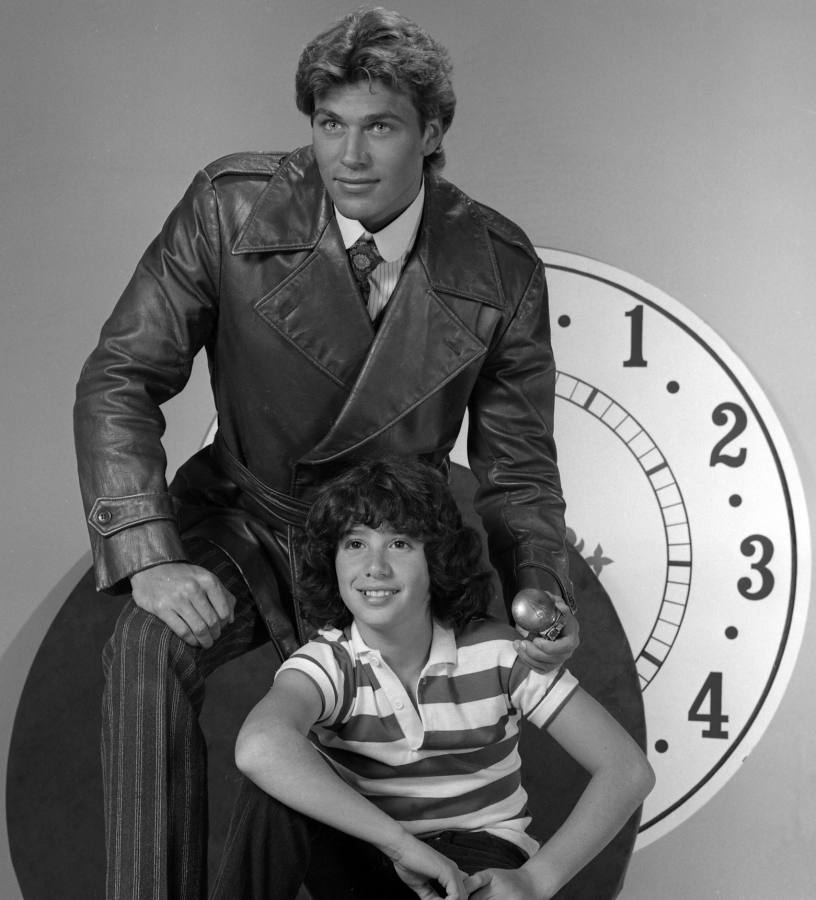How the National Coalition of TV Violence interfered withVoyagers! Production
The National Coalition of TV Violence (NCTV) was a television watchdog group led by Thomas Radecki, a former psychiatrist, and coalition chairman. Since the fall of 1980, the group had routinely issued research reports on television shows. The NCTV had three-thousand members consisting of psychiatrists, psychologists, pediatricians, and members of anti-violence organizations. The paid staff included six monitors, four part-time and two full-time. The staff-team regularly changed since they were barely paid minimum wage. ($3.10- $3.35 hr. between 1980-82.)
The NCTV findings were taken seriously by the mainstream media and the television critics who preferred having the statistics back up their opinions and potshots at TV shows they disliked. Newspapers printed NCTV reports frequently, giving them as much focus as the Neilson Ratings. The major TV networks were forced to notice and adjust their programming.
The National Institute of Mental Health (NIMH) had conducted its examination in May 1982. Their researchers concluded that violence on television led to aggressive behavior in children and teens who watched those programs. Simply put, TV was considered a general form of violent entertainment. Between 1972 and 1982, they claimed more violence on children’s weekend programs than on prime-time television.
Rev. Donald Wildmon headed the Coalition for Better Television. He pushed to boycott NBC and its parent company RCA. Wildmon insisted the network aired shows with too much violence and sexual content and too often stereotyped people with religious faith. He also rallied to boycott NBC’s subsidiary company, Hertz. Wildmon asked Coalition members not to buy RCA products of Hertz cars. After watching an episode of Magnum, PI (1980), Wildmon noted the hero shot an unarmed man.
“Our position is that violence is still being exploited by the networks. They have departed from what they said, that the good guy has certain morals.”
The National Parent-Teacher Association (PTA) also joined in the war on TV violence. They packed a ‘Critical Viewing Skills’ kit to educate parents and kids about proper viewing habits. The kit included a questionnaire for parents to monitor their children’s programs to track the violence in the shows they watched. Parents were to report rewards or punishments given to the initiators of violence and its effect on the victim. They noted physical and psychological injuries, property damage or loss, and social trauma. They also had to remark if they felt the consequences were realistic.
NBC was hit the hardest because it had the worst record of the networks. Voyagers! (1982) was one of the top five shows considered too violent for prime-time between September 27 and December 26, 1982. It fell in the number three spot, beginning with 30 violent acts per hour. It was considered one of the most violent programs ever shown at 7:00 pm. This report didn’t bode well for the networks when the watchdog groups and religious organizations put sex and violence on television under extreme fire. Even if there wasn’t sexual content, the critics felt that producers substituted violence for creativity.
The 1995 book Violence in the Media makes critical points that have plagued television content and reviews every decade.
“The “problem” of TV violence is not a problem of uninformed viewers. … The problem, in the minds of the critics, is that television violence exists at all. That is why the critics are never satisfied. If TV violence is realistic, as in a reality cop show, they complain that it leads people to think the world is threatening. If it is unrealistic, as in cartoons, they complain that it is desensitizing. If violence is portrayed as painful or bloody, they complain about gore. If it is portrayed as clean, they complain about trivialization.”
“If villains use violence to hurt people, critics gripe about bad role models. If heroes use violence to save people, they’re teaching that violence solves problems, critics say.”
The number of supposed acts of violence in Voyagers! (1982) increased with further study. The NCTV released a wire report to media outlets naming their top ten most violent shows airing on prime-time. Guess which show was number one? Apparently, with a grand total of 37 violent acts, some real-life wars saw less action than Voyagers! (1982) by NCTV standards. Because of this ruling, the producers and writers always needed to appease television censors figuratively out for blood.
According to the NCTV, “Anything over ten acts per episode is considered high and excessive. We have never had a series that maintained a level of 37 acts during the course of a season.”
Thomas Radecki and the NCTV outrageously cited Voyagers! (1982) as the gravest example of TV violence when it premiered. The Coalition mailed detailed reports persuading TV networks, stations, and advertisers to curtail violence. The growth of such brutality in children’s shows bothered him more than in any other programming.
“Voyagers! (1982), Tales of the Gold Monkey (1982), and Bring ‘Em Back Alive (1982) all make wartime violence and intrigue into exciting family fun. Bombs, grenades, airplane duels, and taking the law into your own hands all become routine for the home viewer. At a time when war is raging around the globe, and the major powers are threatening each other with a nuclear arms race and war, we should be especially careful to portray violence and war accurately.”
When Radecki discussed the new crop of shows (including Voyagers! (1982) and some returning shows like CHiPs (1977), he was concerned with who would influence the children.
“They make violence attractive to younger viewers, and the heroes become the new role models that kids want to emulate.”
On Voyagers! (1982), he added, “The rating is higher than any show that I know of in the past. We have not had any program in our annual surveys that consistently ranked that high.”
Radecki claimed Voyagers! (1982) was “… a revisiting of the most violent episodes in human history with the two heroes, one, a 10-year-old boy, using violence in the guise of making things right again.”
He felt Voyagers! (1982) mocked real wars by turning them into “… exciting entertainment where heroes never die.”
“Voyagers rapidly flies from World War I to pirate warfare and brutal gladiator combat in ancient Rome, making it all seem very appealing.”
Even children weren’t safe from NCTV finger-wagging. Dr. Radecki called the character Jeffrey Jones “… a 10-year-old master of violence, always throwing sticks of dynamite to blow up soldiers.”
In defense of Voyagers! (1982) Jeffrey was eleven going on twelve. Voyager Bogg, the adult, threw sticks of dynamite, and it wasn’t his intention to kill anyone. In “Bully and Billy,” Bogg threw dynamite off rooftops to create a diversion. He awakened the sleeping soldiers and scared them and their horses so they’d run away.
In “Worlds Apart,” Bogg throws dynamite at the entrance of a giant, locked gate to free the people trapped in the prison camp.
In “The Trial of Phineas Bogg,” Jeffrey does attempt to move a stick of lit dynamite away from Sam Houston, who was tethered to a wood post. Jeffrey didn’t even get near it because a wagon wheel fell atop him. Bogg runs over to help, and he throws the dynamite from them, making sure the area’s free of people.
Tom Shales, a critic for The Washington Post, felt the violence was taken out of context, for example, if the story revolved around war. “Look at The Blue and the Gray, an eight-hour CBS special. It is extremely gory by TV standards, but it is telling the story of the Civil War, and the war was violent. If you just sit and count incidents, you are often missing the point. Violence, in this case, is justified.”
When it came to shows like Voyagers! (1982) Shales considered it “cartoon violence.”
“When you have a car flying through the air, somebody ducking and no one being hurt, from my viewpoint that is totally harmless. Technically it is violence, but it’s a much more innocent form of violence.”
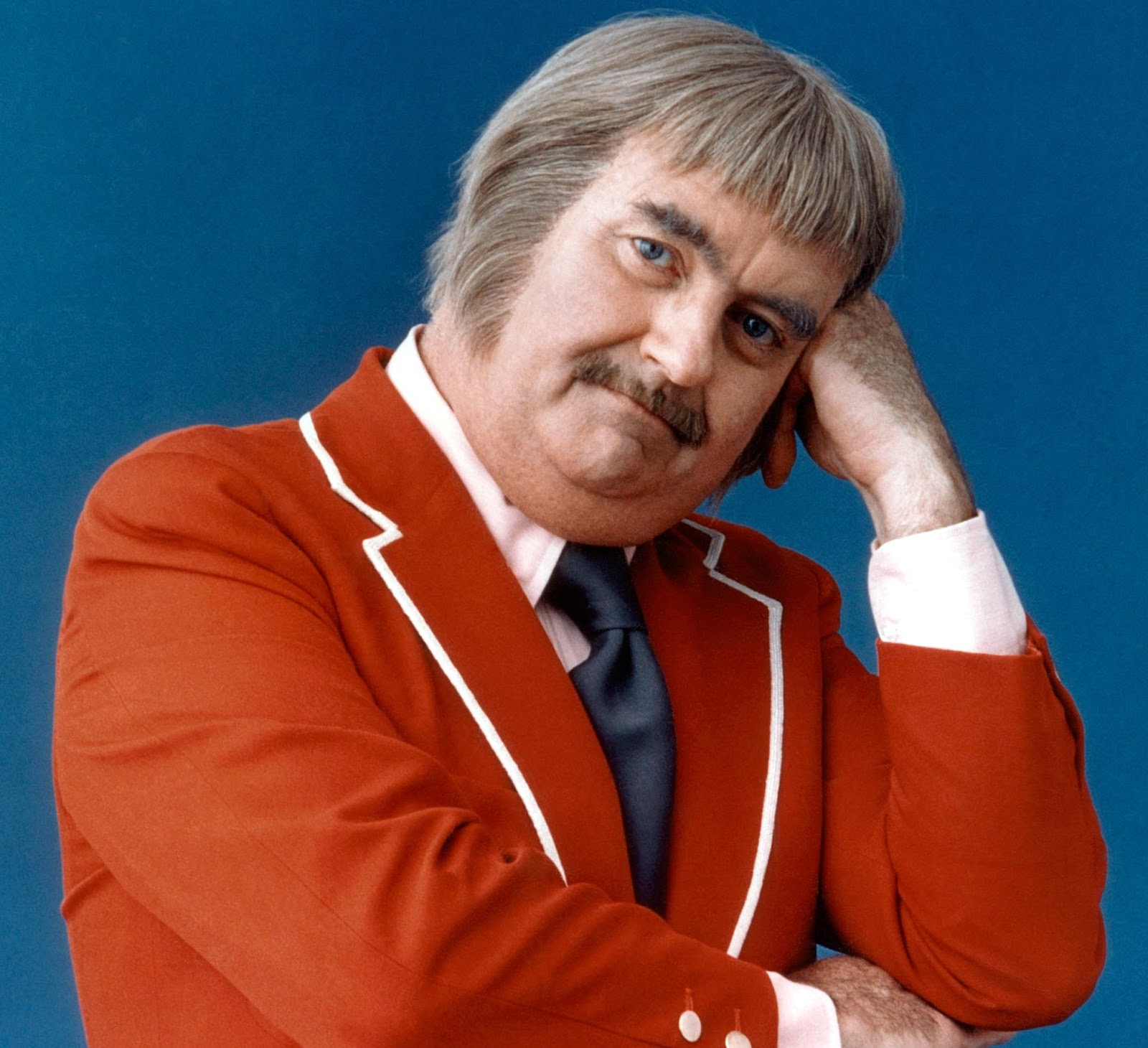
Bob Keeshan was instrumental in children’s programming, from playing the original Clarabell the Clown in NBC’s Howdy Doody (1947) to creating the beloved CBS TV show Captain Kangaroo (1955). In addressing violence on TV, he referred to actual history.
“There is a lot of talk about violence as an evil thing, but history books could not be written without it, and many of Shakespeare’s works could not be staged without it.”
Interestingly, by the 1990s, Keeshan wanted to revive Captain Kangaroo but felt that children’s programming had become too violent, so he crusaded against it. Ultimately, there will always be violence in reality, which will make its way into popular entertainment, whether found in plays, movies, books, or television.
Voyagers! Scene Breakdown
The NCTV put more emphasis on murder and rape than angry pushes and shoves. Playful pies in the face weren’t counted, but furious pie tosses and punches did. There’s no pie-tossing on Voyagers! (1982) (ain’t that a shame?) but there is a grapefruit smashing!
Bogg shoved a grapefruit in Cleopatra’s face in mock anger. It was a clever ruse taken from the James Cagney film The Public Enemy (1931).
Bogg needed to provoke Babe Ruth enough to leave the speakeasy before the real gun-toting criminals showed up. Babe Ruth, defending Cleo, asks Bogg to “step outside” for treating a woman so harshly, “even if she is your wife!” he says in all seriousness. Cleo tries to referee while Jeffrey’s yelling at them all to hurry up and get in the car. The plan worked perfectly until Lucky Luciano and his gangsters appeared, and a car chase ensued. The scene is played for laughs in the spirit of a screwball comedy.
Knowing the NCTV’s standards, they probably counted Bogg’s grapefruit smash the same way they did “furious pie-tossing” and marked it as an act of violence. A counter-argument for violence not mentioned is that although Cleopatra was a willing party to Babe’s kidnapping, Bogg committed a violent act against a woman. Due to the dire circumstances, he didn’t apologize for the ruse. Still, he was willing to explain once they escaped Luciano.
The NCTV reports were more concerned with bullets, bombs, punches, and knifings regardless of gender. The additional factor of violence against women is more concern today than in 1982. Especially considering a young boy makes the suggestion based on what he saw on TV. Today’s Feminist movement would eat that scene up and spit it out as a prime example of young boys being taught “toxic masculinity.”
CBS Spokesman George Schweitzer reasoned, “I’m sure if you put 50 people in a room and showed five different programs, you’d get different responses to what was violence. Everybody has a different definition of what violence is.”
While their wording differs slightly, the TV networks use a similar definition of violence. It is considered an intentional inflection of physical harm by one person on another. Jon-Erik Hexum didn’t buy all the criticism and voiced his displeasure (laced with sarcasm) on a few occasions. He was more concerned with ratings than accusations of violence because they’d be canceled if the show didn’t rise in the Neilsons.
“We got a lot of good press. We also got some bad press from the National Coalition of TV Violence, but they don’t know what they’re talking about.”
On being targeted as the most violent show on TV, Jon-Erik remarked, “I think that’s wonderful. What we need is to be accused of being sexually exploitative, then we’ll really get an audience.”
What Accounts For “TV Violence?”
Thomas Radecki had considered his violence counting method the best used. The NCTV counted each intentional hostile action. If someone got hit with a fist, then smashed with a chair in a brawl, that would count as two separate acts. They also counted serious threats where guns were present.
Horst Stipp, former Director of Social Research at NBC, said, “The big problem with counting violence is you have to ignore content. In one instance, you might have a criminal murdering somebody. In another, you might have a cop on “Hill Street Blues,” shooting a fugitive, then collapsing and crying over what happened. One might be exploitative; the other might have a strong anti-violence message.”
For Jon-Erik Hexum, too, the intent was everything. He’d felt the Coalition didn’t consider the violence in context and gave the example of a crazy rapist chasing a woman until he catches her. The Coalition would label that as one act of violence.
“There’s no question that it’s (Voyagers!) not a violent show. The National Coalition doesn’t consider context; they consider acts. They have accused us of 37 murders on the show, which is ridiculous. Their standards are illogically distorted.”
Jon-Erik overstated the NCTV findings, but he made a valid point. Nobody is ever seen murdered on the show. One report declared that on Voyagers! (1982) an episode might open with a historical battle scene, dead bodies (no gore or close-ups), and gunfire. Then the camera will pan up to Bogg and Jeffrey. This is clearly an exaggerated description of a scene that never actually happened.
The only time viewers saw literal death was in the Pilot episode. After the Red Baron shoots at Bogg and Jeffrey on the haystack, Eddie Rickenbacker and Mary Murphy are seen dragging two men away from a crashed airplane, and the men are left face-down in the grass.
Eddie remarks to Bogg, “I’m alive, which is more than I can say for the guys in the Escort plane.”
Aside from physical assaults, the Voyagers! (1982) production team learned to their dismay, that the Coalition’s criteria for violence calculated exploding bombs and gunfire, even just the sound of them, as individual acts of violence. So in that instance, scenes where weapons, explosives, and gunfire were merely heard outnumbered an actual rape scene.
Jon-Erik Hexum defended Phineas Bogg’s actions. “I have never killed, never stabbed anyone. And the most I ever punch people is three times. It’s comic book violence, not malicious or vicious. There’s no animosity or mal-intent.”
“I would grab a pirate by the nose, and they would call that ‘extreme violence.’ It was absurd.”
Quoting a similar line spoken about Phineas Bogg’s actions during “The Trial of Phineas Bogg,” Jon-Erik said, “What people say or what people mean is everything. You can cling to the letter of the law and not the spirit. The simplest retort is to watch the show.”
During Jon-Erik’s 1984 interview on the Don Harron Show (1983), Harron mentioned that someone had said the show was full of violence. Jon-Erik, slightly annoyed, responded, “The National Coalition against TV Violence said it, but they don’t consider content. It was like grabbing a pirate by the nose, you know, spinning him around. It wasn’t really violent at all. We did good, against 60 Minutes, at least we stood on a year.”
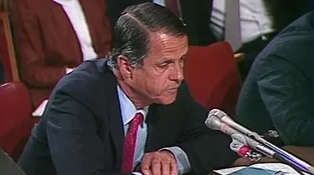
Ralph Daniels, then NBC’s Vice President for Broadcast Standards, kept a realistic view of Voyagers! (1982) historical themes.
“We’re capturing the essence of a situation. There is action and violence, but we ensure that there is not excessive violence. There are no threats. There is no question that in history, there was violence. I think we’re dealing more with actions.”
NBC CEO Grant Tinker was asked to remark on the effect of TV violence on crime and delinquency. “If you sit a 5-year old child down all day before a set, it’s bound to have an effect. We’re going to work closely with the producers of shows like The Powers of Matthew Star, Voyagers!, Gavilan, and Knight Rider, to be sure there is no excessive violence. Hopefully, if we set an example, others will follow.”
After reviewing the NCTV’s findings, a 1983 editorial in The Boston Globe made their summations of the network shows, including Voyagers! (1982) when they’d studied the twelfth episode, “Buffalo Bill and Annie Oakley Play the Palace.”
“Voyagers! NBC – The episode viewed may have been atypical. It opened with a montage of warfare, but our time-traveling heroes faced no more pitched battles for the remainder of the hour. There were a couple of fights, a fiery explosion, a flying kick, some pushing and shoving, and threats emphasized with a whip and an array of spears. The “educational” portion of the show consisted of some Russophobic dialogue and a homily on “respect for life” delivered by none other than Albert Schweitzer. Even assuming this show has less violence than usual, it’s difficult to believe “Voyagers!” leads the medium in rough stuff. But there must be more peaceful, constructive ways for kids to learn history.”
When the NCTV cracked down, critics were quick to notice. They called gratuitous violence a “cheap crutch” used by scriptwriters and noted it’d disappeared from prime-time television. They still claimed the most violence was found in Voyagers! (1982), Bring ‘Em Back Alive (1982), and Tales of the Gold Monkey (1982).
The Boston Globe editorial continued, “I’m not excusing these series – especially the children-oriented “Voyagers” – but at least a half-thinking parent should be able to adequately explain to a child the difference between make-believe fantasy and real-world violence. Better yet, adults might be better advised to skip them in the first place; after all, there is a valid argument that TV violence translates into real-world violence.”
Undoubtedly, viewing excessive television violence can have a detrimental effect over time, particularly on children. They’re often excellent mimics. The world is not just influenced by television anymore. The Internet has become a steady source of entertainment. Adults must be careful about what they put out since children quickly learn to gain access. Videos on popular sites like Youtube, Instagram, TikTok, and Facebook feature scores of adults participating in questionable “challenges,” creating fan films, and re-enacting scenes from famous movies and shows. Other video forum sites show clips and images of horrific violence and accidents. The mainstream news media runs violent footage, sometimes 24 hours a day. In some instances, movies and television shows become the “Strawman” for political and social debates when individual acts of violence are perpetrated in real life.
Adults are responsible for their choices, and parents are accountable for stepping in and making their television judgment calls. They should take an active interest in their child’s viewing habits rather than presume that because it’s labeled “made for kids,” it doesn’t contain violence.
The average viewers, especially children, are not ticking boxes or keeping a written list. Not unless they hope to get those Nielson rating dollars through yearly surveys. The bottom line is that viewers want to relax and enjoy programs, not count how many gunshots or bombs they may have heard “in the distance.”
It’s understandable why violence reports from the NCTV or NIMH carried weight with the mainstream. In 1982, television didn’t have a rating system. From 1982 – 1993, the NCTV data found children’s programs across the 4 major TV networks too violent, curiously making it the most violent television genre. Over the decade, they cited that the average number of violent acts per hour was 22.4, compared to 8.6 for adult programs aired during the same period.
It took fifteen years to develop a TV rating system. In 1997 Congress and the FCC mandated ratings for major broadcast networks and cable stations. Since then, every program has been marked with an alphanumeric rating and content warning. Reliable, high-traffic websites such as IMDB (The Internet Movie Database) allow users to post notices with specific counts of violence, swearing, and immoral or sexual acts.
Television is arguably considered art, though others classify films and TV as only a visual medium. Regardless, it’s often said that “art imitates life” or reflects society. The difference is stark when comparing Voyagers! (1982) to the prime-time programs currently airing in the 2020s. If America had kept to the original NCTV standards, the violence count on children’s programming would be out of control.
Voyagers! (1982) received unwarranted criticism, so considerable tinkering went on behind-the-scenes to meet these nearly impossible NCTV standards. The last handful of episodes cut out many rip-roaring, time-hopping adventures. This was mainly due to budget; however, those quick trips to multiple time-zones often involved landing in active battlefields or amidst violent skirmishes. It was those scenes that raised the violence count with the NCTV. The latter episodes focused on intimate, dramatic situations within just two time-zones. Even with threats of violence against the heroes, Bogg started using more brains than brawn. Jeffrey was kept away from harmful conditions as often as possible.
Voyagers! (1982) had managed to find a balance, but it was too late to avoid cancellation.

